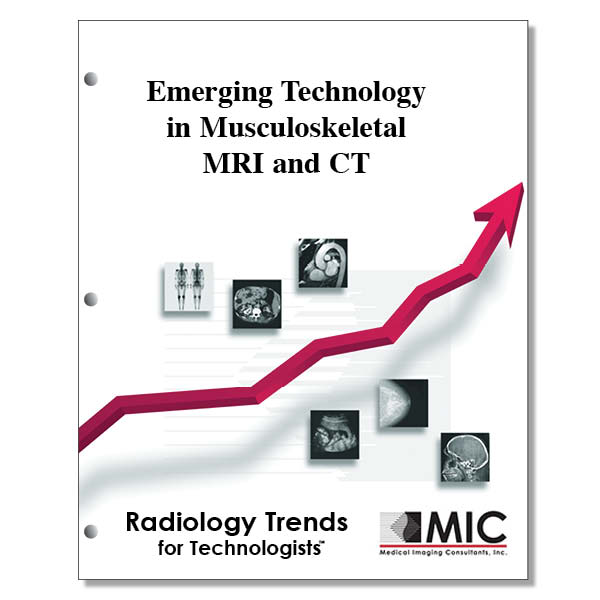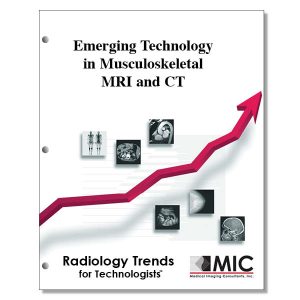

Emerging Technology in Musculoskeletal MRI and CT
Recent developments in scanner technology, acquisition techniques, and post-processing methods have contributed to substantial expansion in diagnostic performance and clinical applications of musculoskeletal MRI and CT.
Course ID: Q00782 Category: Radiology Trends for Technologists Modalities: CT, MRI, Radiography, RRA2.5 |
Satisfaction Guarantee |
$29.00
- Targeted CE
- Outline
- Objectives
Targeted CE per ARRT’s Discipline, Category, and Subcategory classification:
[Note: Discipline-specific Targeted CE credits may be less than the total Category A credits approved for this course.]
Computed Tomography: 0.25
Image Production: 0.25
Image Formation: 0.25
Magnetic Resonance Imaging: 0.75
Image Production: 0.50
Sequence Parameters and Options: 0.25
Data Acquisition, Processing, and Storage: 0.25
Procedures: 0.25
Musculoskeletal: 0.25
Outline
- Introduction
- Emerging MRI Technology
- Conventional Accelerated MRI Reconstruction
- Deep Learning-Accelerated MRI Reconstruction
- Super-Resolution MRI Reconstruction
- DL MRI Synthesis
- Synthetic MRI
- Ultra-High-Field-Strength MRI
- Modern Low-Field-Strength MRI
- MR Neurography
- Advanced 3D MRI Scan Representation
- Emerging CT Technology
- Dual-Energy CT
- Photon-Counting Detector CT
- Synthetic CT
- Conclusion
Objectives
Upon completion of this course, students will:
- describe the major determinant for adding value to musculoskeletal MRI
- list the benefits associated with shorter musculoskeletal MRI exam times
- explain the degree of imaging acceleration provided by MRI parallel imaging
- explain the degree of imaging acceleration provided by compressed sensing MRI
- describe the deconvolution process for mixed MRI signals obtained from simultaneous multislice imaging
- identify the mathematical model used in deep learning-based reconstruction
- compare the benefits of deep learning-based reconstruction to other acceleration methods
- identify the body region that has been the focus of deep learning-based reconstruction research studies
- list the benefits of super-resolution 3D MRI
- list the MRI image sets needed to synthesize STIR images by contrast-conversion neural networks
- describe musculoskeletal MRI applications that are commercially available
- list the data sets needed to create synthetic MRI morphologic images
- identify the body region that has been the focus of synthetic MRI applications
- define ultra-high-field-strength MRI
- list the benefits of ultra-high-field-strength MRI
- describe the primary musculoskeletal application of ultra-high-field-strength MRI in clinical practice
- describe the barrier to maintaining optimal flip angles on 7.0-T MRI systems
- define low-field-strength MRI
- explain the cause of poor image quality seen with early low-field-strength MRI systems
- list the reasons low-field-strength MRI systems have seen a resurgence in clinical use
- identify MRI techniques that provide optimal fat suppression when imaging the brachial plexus
- list the areas where signal can be suppressed by most current vascular-suppression techniques
- compare radiation dose between single- and dual-energy CT
- list tissues that can be seen on collagen-specific images created from dual-energy CT
- list the benefits of photon-counting detector CT systems over current CT systems
- describe image artifacts that can be reduced when using photon-counting detector CT systems
- identify target structures that can be imaged by ultra-short-echo-time MRI
- list the body regions that have been evaluated by zero-echo-time MRI research studies
- describe the application of simulated CT images derived from gradient-echo MRI studies
- list the gradient-echo techniques used to create simulated CT images
